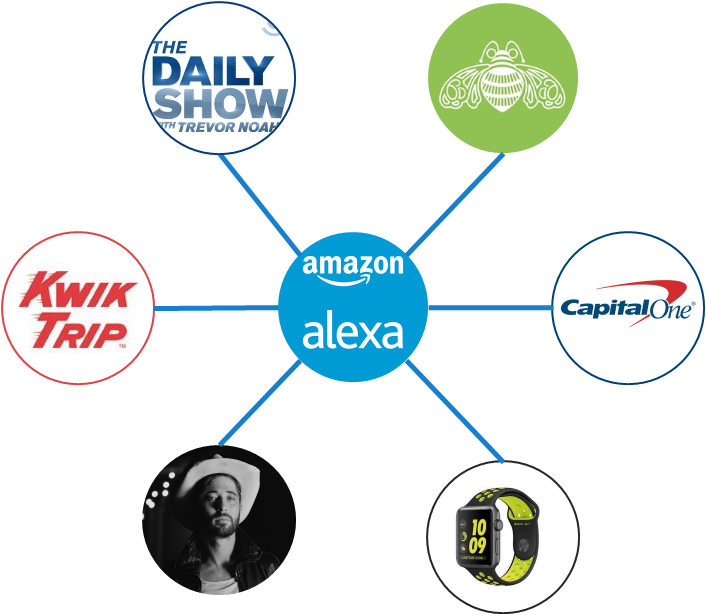AI Marketing Uncovers CES Social Affinities
I know what you’re thinking – not another blog post about the top products at CES. Well, this one is a bit different than others posted this week. No, not because I did not actually attend CES, but because it is the only one to examine the social affinities of a couple of the top products at CES this year, and how consumer preferences (measured via our mutual affinity metric) can be used to help bring these products to market.
Almost every CES recap I’ve read has referenced Amazon Echo’s voice assistance, Alexa. Amazon was not even an official CES attendee, but Alexa showed up in products from cars, phones, refrigerators, washing machines, lamps, and robots made by manufacturers such as Lenovo, LG, Ford and GE. By creating a device-agnostic operating system, Amazon is leading the AI in the home movement, while building out even more pathways into their commerce engine.
As manufacturers in Amazon’s ecosystem look to launch Alexa-embedded products, they will need to discover the right audiences for their marketing campaigns. This is an area where the social affinities discovered by Affinity Answers’ TrueAffinity™ (TA) metric can help. TrueAffinity™ is an AI marketing tool that utilizes the first brand interaction metric that indicates the strength of active, mutual engagement between brands’ audiences over time. The higher the score, measured on scale of 0.00 to 10.00, the more receptive one brand’s’ audience is to messaging and content from another brand. All TrueAffinity scores represent statistically significant, positive, mutual affinity and are designed to be actionable.
We can look at the existing Amazon Echo audience, and discover other audiences with high mutual affinities, which are perfect for Alexa-powered product campaigns as they are by definition likely to engage with Alexa content. As you may expect, some of the top affinities with Amazon Alexa are tech gadgets, but what you may not expect are the top two non-Amazon tech brands are Apple Watch (TA = 8.63) and iPad Mini (TA = 8.57). And though Amazon will not be replacing Siri anytime soon, their audiences could be great targets for Alexa products. Other brands, movies and musicians with high affinities are not as obvious: Ryan Bingham = 8.80, Patron Tequila = 8.53, Kwik Trip = 8.51, Capital One = 8.33, and The Daily Show = 7.66. Again, these are great audiences for programmatic advertising, and some even partner opportunities (I’m thinking Capital One more so than Patron – I’m not sure the frictionless commerce of Alexa and tequila are a good match).

Another Standout product of this year’s CES came from Toyota, though it will be years before the product hits the market. Toyota introduced a concept car, called Concept-i. Like Amazon Echo, it too is embedded with a digital assistant, named Yui in Toyota’s case. While other manufacturers are going straight towards driverless “pod” seating, Toyota designed the Concept-I with an emphasis on the steering wheel and driver. The steering wheel is also the central location of their AI, which will learn driver preferences and proactively assist or take over driving as needed.

As Toyota builds out their ecosystem around the car, social affinities can be used to help determine partnerships that will resonate with the Toyota audience, such as:
- Financial institution HSBC (TA = 8.07)
- Consumer electronics manufacturer Alpine (TA = 7.98)
- The Samsung Galaxy smart phone (TA = 7.98)
- Communications service provider AT&T (TA = 7.93)
- Nespresso coffee (TA = 7.74)
- McDonald’s restaurant (TA = 7.69)
- Apple Watch (TA = 7.65)
- Xbox gaming system (TA = 7.64)
As these machine-learning powered AI products enter the market, it only make sense that marketers use more sophisticated method to brand and market them. TrueAffinity, Affinity Answers’ branding metric, is one such method. Contact us to learn more.


